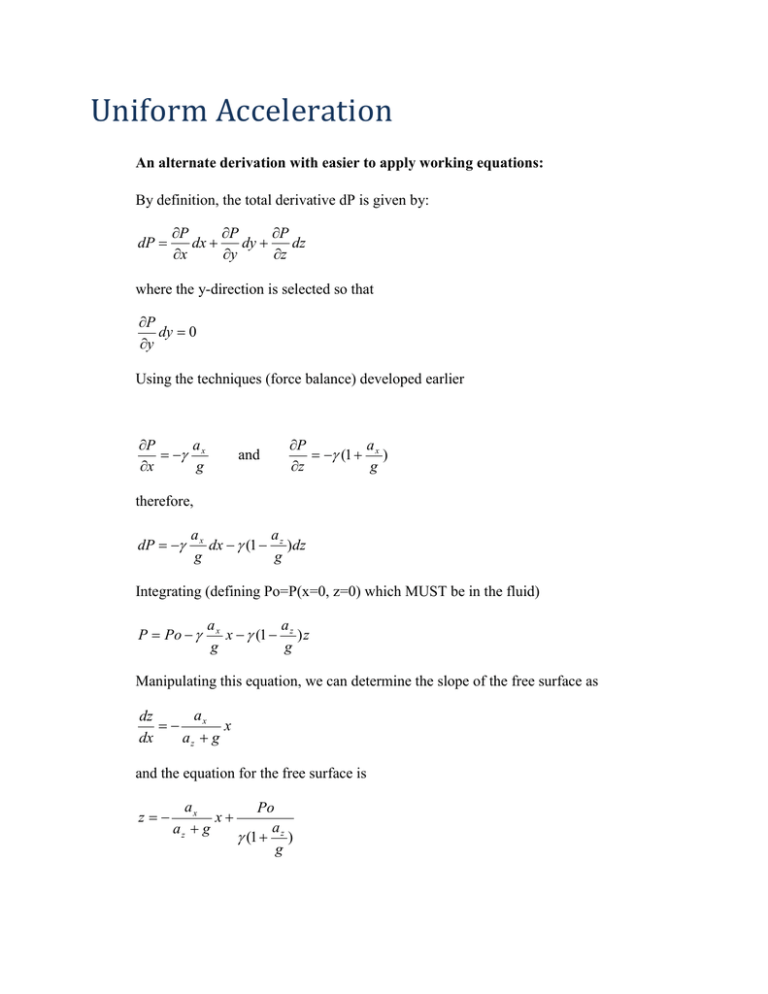Uniform Acceleration
advertisement

Uniform Acceleration An alternate derivation with easier to apply working equations: By definition, the total derivative dP is given by: dP P P P dx dy dz x y z where the y-direction is selected so that P dy 0 y Using the techniques (force balance) developed earlier a P x x g and a P (1 x ) z g therefore, dP ax a dx (1 z )dz g g Integrating (defining Po=P(x=0, z=0) which MUST be in the fluid) P Po ax a x (1 z ) z g g Manipulating this equation, we can determine the slope of the free surface as ax dz x dx az g and the equation for the free surface is z ax x az g Po a (1 z ) g Hints for “regular containers” 1. In rectangular tanks, liquids “rotate” around their center-line 2. If the bottom becomes “dry”, (1) does not apply 3. If the liquid spills, (1) does not apply 4. When (1) doesn’t apply, use geometry and the problem statement to establish the location of the free surface.
